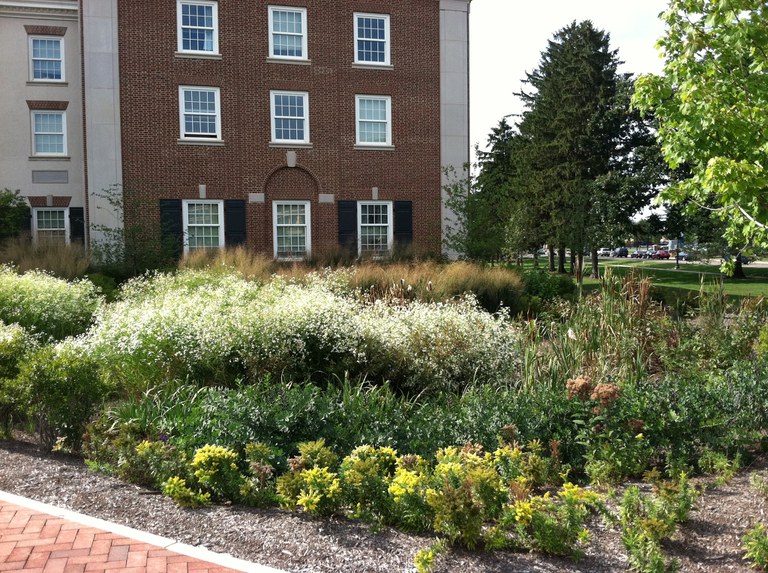Posted: July 11, 2017
Landscape professionals in Pennsylvania can now become Chesapeake Bay certified through a new training and certification program coming to Lancaster later this month.
A new program is coming to Pennsylvania which will provide training and certification to landscape professionals in landscaping for clean water.
The Chesapeake Bay Landscape Professional (CBLP) Certification program was developed to help increase landscapers' knowledge and skills in implementing green infrastructure projects. CBLP trains and certifies landscape professionals so that they are comfortable working with green infrastructure in order to help communities reduce and improve stormwater runoff. The program was piloted in 2016 in Maryland, Washington D.C., and Virginia but is now available in Pennsylvania.
The first Pennsylvania training will be held July 24-25 in Lancaster. Candidates for the certification must have a degree, certificate, or certification in a related field, or have professional experience in landscape design, installation, or maintenance.
To apply or to learn more about the certification visit www.cblpro.org.
Interest in linking landscaping to stormwater management to has grown in recent years. Stormwater runoff from buildings, streets, parking lots, and any other hard surfaces during rain events has been identified as a major cause of water pollution.
Traditionally this runoff was directed to storm drains, gullies and road-side swales and discharged directly to streams, rivers and lakes. The pollutants picked up by the stormwater include oils, chemicals, pet waste, soil, trash and more.
To help correct the issues caused by stormwater, communities with Municipal Separate Storm Sewer Systems (MS4s) are required to reduce the quantity and improve the quality of stormwater leaving the community. They can either improve water quality by altering their sewer and storm drain networks, a very expensive undertaking, or by installing green infrastructure. Green infrastructure is any water management practice that uses plants and soils as a natural process to reduce runoff from the land to improve water quality. Green infrastructure can be a cost effective option that also provides benefits such as wildlife habitat, health benefits, and improved landscape aesthetics.
Green infrastructure, such as rain gardens, bioswales, and tree plantings, often rely on vegetation to help remove pollutants and slow down water flow. The care of the plants and related maintenance determines how effective the practice will be and how long it will continue to function.
The training provided later this month in Lancaster will provide Pennsylvania landscapers with the knowledge and skills to design, implement and maintain green infrastructure, giving these professionals the training needed to work with municipalities and homeowners to do their part for clean water.
By Sarah Xenophon, AEC Watershed Technician


